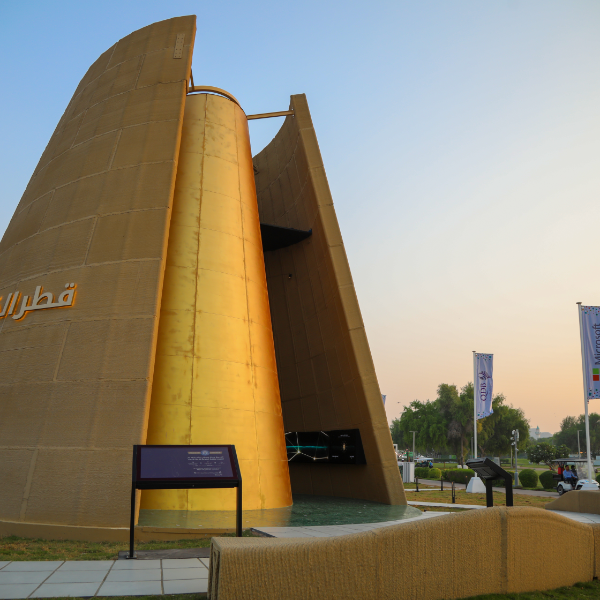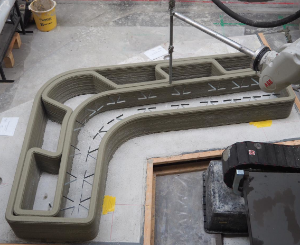Record tower inspires to innovate in 3D concrete printing

Record tower inspires to innovate in 3D concrete printing
The world's tallest 3D concrete printed structure has been realised in Qatar. The Qatari Ministry of Communications and Information Technology wanted to showcase its pavilion at the Doha Expo 2023 in an innovative way. It therefore contacted Saint-Gobain Weber Benelux and Witteveen+Bos via contractor KPM3; innovators in 3D printing with concrete.
Challenging planning
The assignment was complex for several reasons. Among other things, because of the challenging planning towards the opening of the expo, but also because Witteveen+Bos as designer and constructor and Saint-Gobain Weber Benelux as 3D printing expert and manufacturer, took the opportunity of this record attempt to further innovate 3D concrete printing technology.
The planning was driven by the opening of the expo and the logistical challenge of transporting all elements by boat from the Netherlands to Qatar. Through intensive and smart cooperation, we managed to achieve a very short lead time: within two months from initial design idea to creation and shipping.

Futuristic design
The design pushes the boundaries of 3D printing technology. Eye-catching is the interrupted circular structure and the distinctive 30-degree inclination. To realise this futuristic design, maximum use was made of the advantages of 3D printing technology. As many as 85 unique building blocks were designed. Each concrete element was individually printed and material was only printed where needed for strength. Furthermore, the blocks have a hollow structure.
The result is a 3D-printed tower, composed of ten layers with eight or nine blocks each, creating a structure measuring with a height of 12.4 meters. After evaluation, the Qatari tower has been acknowledged as the Guinness World Record for the 'tallest free-standing 3D-printed concrete structure'.
Marijn Bruurs, 3D concrete printing expert at Witteveen+Bos: 'This record is also very valuable in a broader perspective. We have been able to put techniques into practice that can also be used on a broader scale, in residential construction, for example. With the 30-degree slope and interrupted circle in the design, the structural and architectural possibilities of 3D concrete printing expand.'
Peter Paul Cornelissen, International 3D Project Manager, Weber Benelux: ‘A project like this lends itself ideally to 3D printed concrete. This has everything to do with the extremely short lead time, the amount of unique shapes and the structural properties of the material used. To guarantee the structural properties of the individual elements, Weber has developed a unique Quality Framework. This allows short lead times and large volumes to always deliver the agreed quality. Something that is essential for any structural building work.’
3D Concrete Printing

Want to know more?
Marijn generates impact through innovation such as digitalisation and 3D concrete printing in the construction industry. He was the winner of the 2020 Cobouw Young Talent Award.
